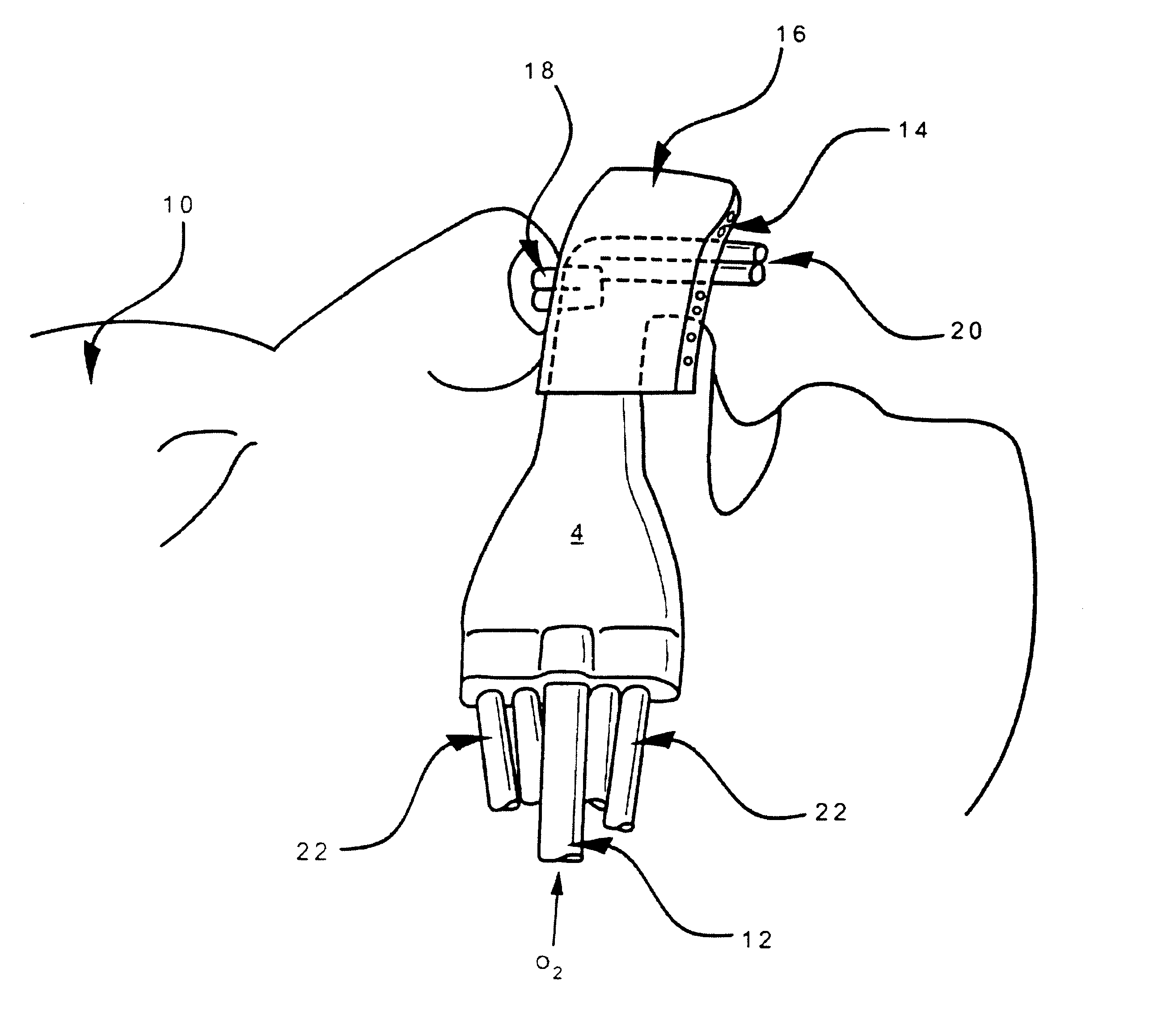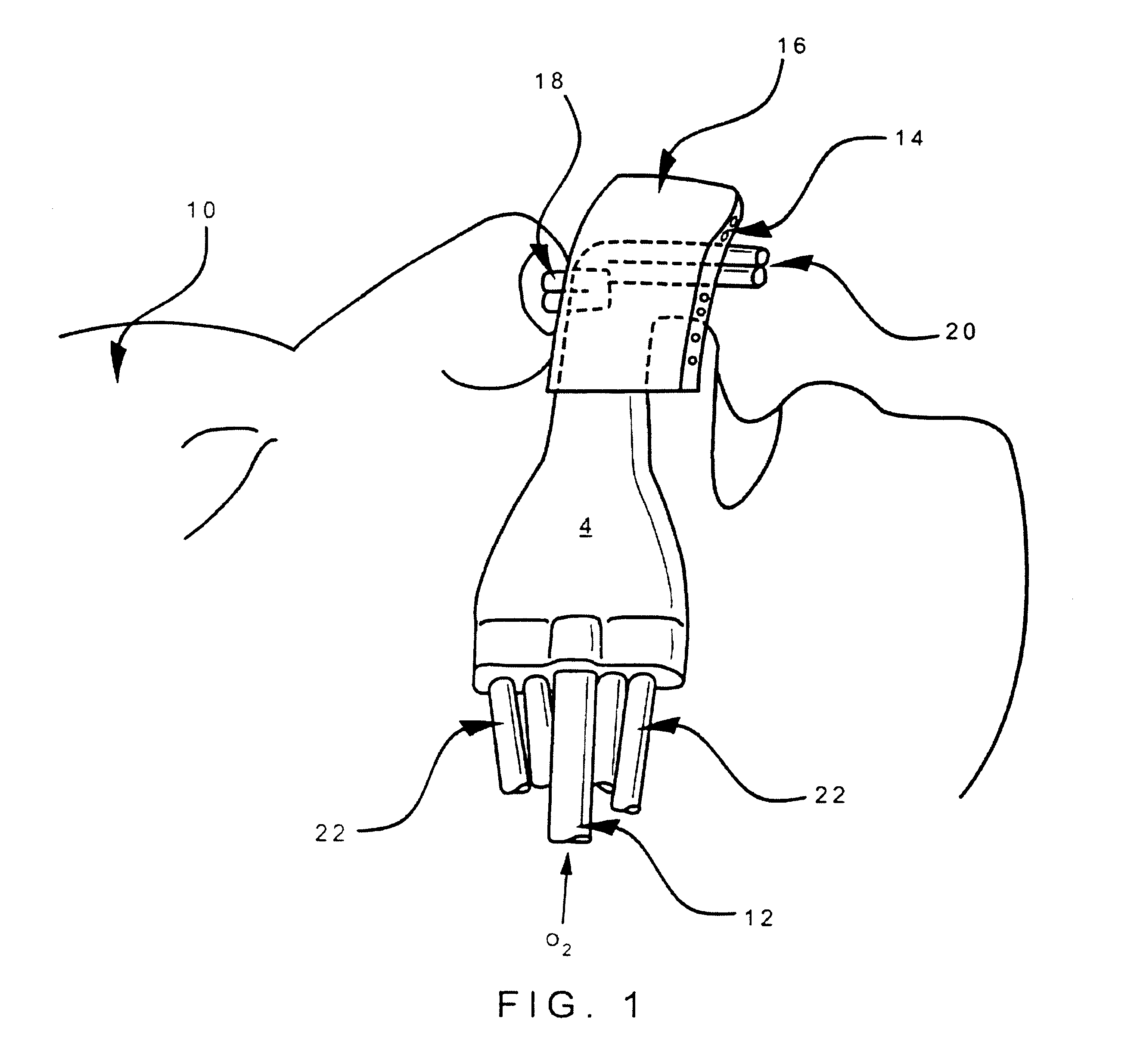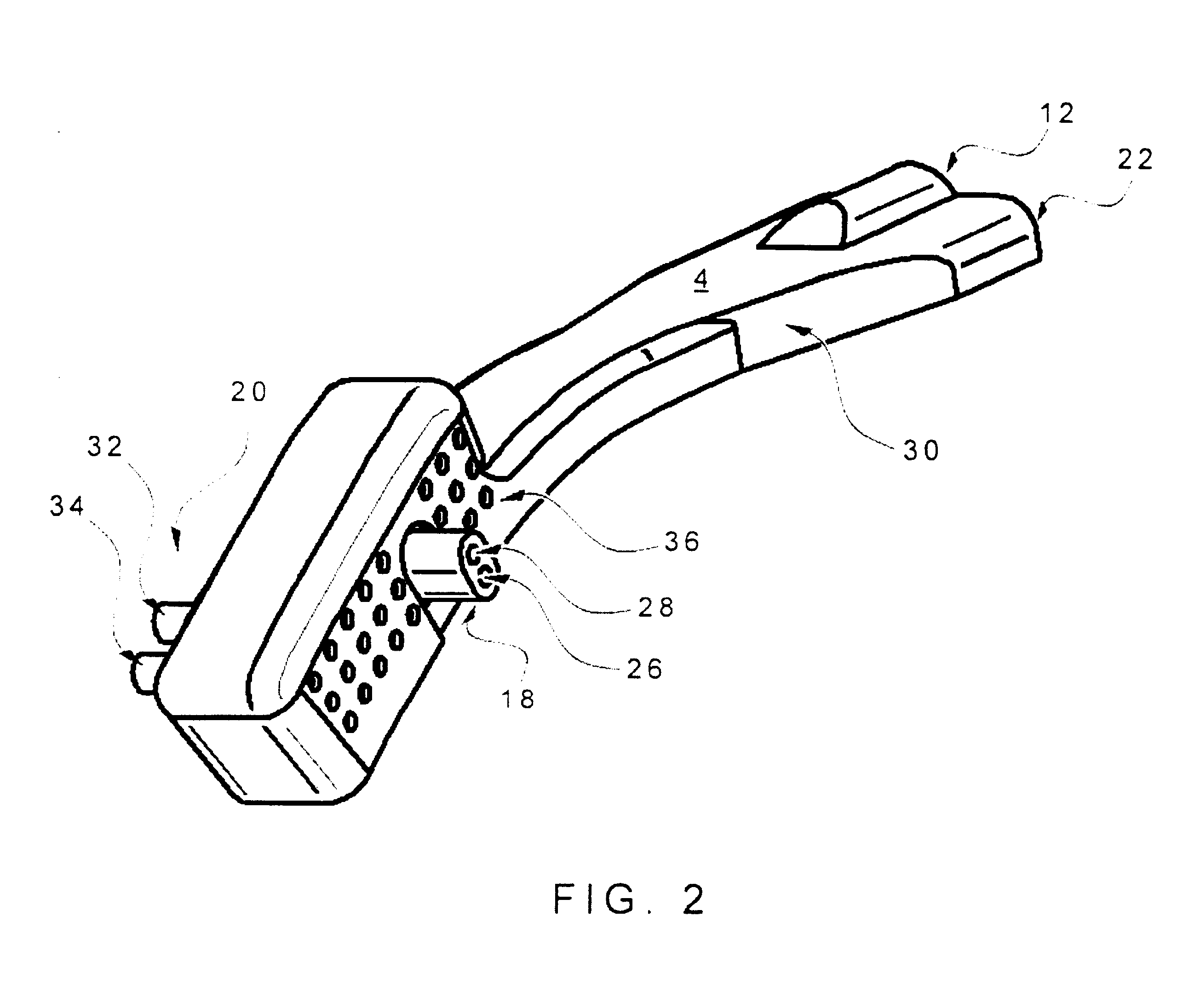Mask free delivery of oxygen and ventilatory monitoring
a technology for ventilators and masks, applied in the field of masks free delivery of oxygen and ventilator monitoring, can solve the problems of patients' ability to speak, patients' anxiety, and significant discomfort of masks, and achieve the effect of effectively monitoring patient ventilation and reducing the bernoulli effect of air entrainmen
- Summary
- Abstract
- Description
- Claims
- Application Information
AI Technical Summary
Benefits of technology
Problems solved by technology
Method used
Image
Examples
Embodiment Construction
[0038]FIG. 1 shows a cut-out view of the disposable portion 4 of an apparatus in accordance with the invention placed on a patient 10.
[0039]The apparatus provides for the mask-free delivery of supplemental oxygen gas to the patient combined with the monitoring of patient ventilation. Oxygen gas is supplied to the patient from an O2 supply tube 12 and exits portion 4 from a diffuser grid 14 in housing 16 (shown in more detail in FIG. 2). Diffuser grid 14 blows diffused oxygen into the immediate area of the patient's nose and mouth. Two thin lumens (tubes) are mounted adjacent one another to portion 4 and placed in one of the patient's nostrils (nasal lumens 18). Another two thin lumens are also mounted adjacent to one another to portion 4 placed in front of the patient's mouth (oral lumen's 20).
[0040]Of nasal lumens 18, one lumen is a pressure lumen for sampling the pressure resulting from a patient's nose breathing and the other lumen continuously samples the respiratory gases so th...
PUM
 Login to View More
Login to View More Abstract
Description
Claims
Application Information
 Login to View More
Login to View More - R&D
- Intellectual Property
- Life Sciences
- Materials
- Tech Scout
- Unparalleled Data Quality
- Higher Quality Content
- 60% Fewer Hallucinations
Browse by: Latest US Patents, China's latest patents, Technical Efficacy Thesaurus, Application Domain, Technology Topic, Popular Technical Reports.
© 2025 PatSnap. All rights reserved.Legal|Privacy policy|Modern Slavery Act Transparency Statement|Sitemap|About US| Contact US: help@patsnap.com



